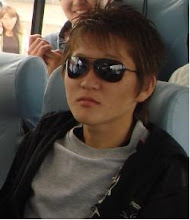When do we use Apostrophes?
There are two basic uses of the apostrophe in English:
1 - To show that letters or numbers are missing.
In contractions, we use an apostrophe to indicate that a letter is missing:
- Isn't = is not
- '72 = 1972
2 - To show possession
If something belongs to a person or thing, we use an apostrophe to show ownership:
- Jane's house is in a nice area. (The house belongs to Jane)
We put the apostrophe after the letter s in a plural:
- The girls' mother collected them from school. (There were two or more girls)
NB: With irregular plurals, we put the apostrophe before the letter s:
- The children's teacher was very popular.
The apostrophe with plurals
We very rarely use the apostrophe to show plurals and only under special circumstances:
- Some people use them with acronyms (words made from the first letters of a phrase, like CD for Compact Disc)- CD's. Others do not use the apostrophe here.
- Numbers- Some people write the 1990's and others write the 1990s.
- To make a letter plural- mind your p's and q's (an expression meaning 'mind your manners')
Other than these circumstances, the apostrophe should not be used in plurals unless they are showing possession.

No comments:
Post a Comment